Some days, Tetari Devi’s mental math even takes her by surprise.
In Naraina village, Chandauli, her petty shop is a hub of activity. Women stop by for her advice on which bangles match their outfits — her shop boasts a colourful accessory collection — while children and men browse the snacks, namkeens (savoury treats), and cold drinks.
It’s almost always busy, and Tetari thrives in the bustle, chatting easily with customers. When she isn’t breaking the ice, she’s bent over her ledger, scanning the month’s expenses.
Tetari loves being in charge — and she’s living her dream.
“My husband always promised he would open a shop for me,” she recalls. That was before she lost him last year. Her world came to a standstill; Tetari was now staring at a future that involved raising three young children with no income to bank on.
Just a week later, her father-in-law passed away.
Dire circumstances pushed Tetari into the fields, working as a farm labourer for just Rs 150 a day. She was unhappy, weighed down by grief and uncertainty. But today, there’s a spring in her step — a sign that she’s found her spark again.
How?
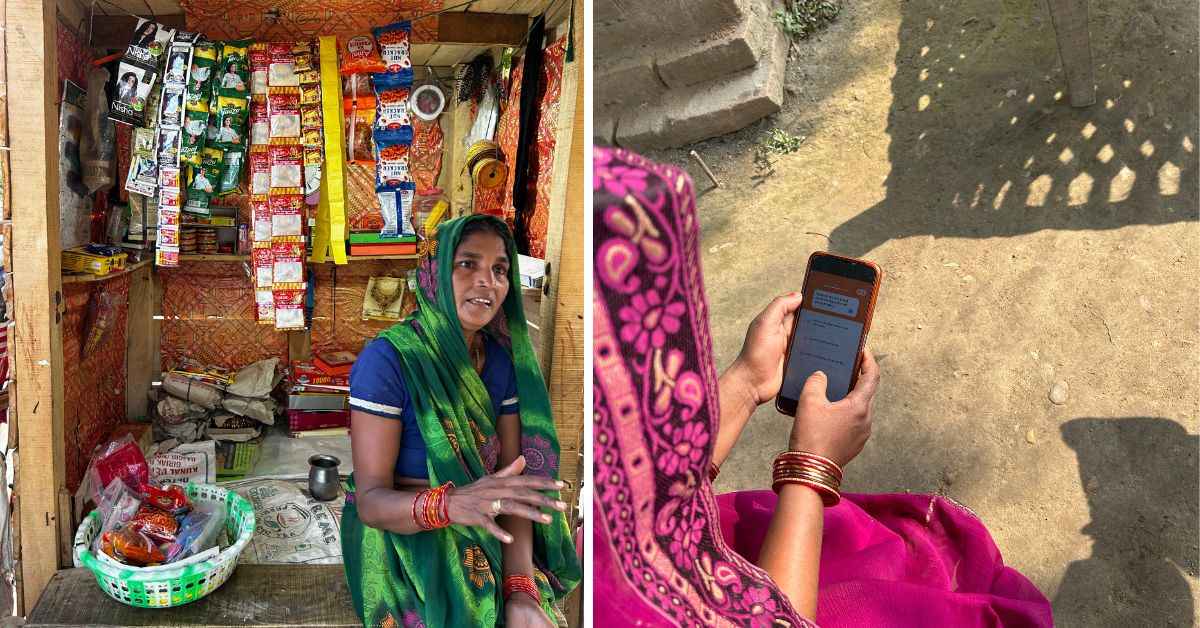
The bridge between her past and present was built by ‘Leap 300’, a programme that helps families trapped in generational poverty become self-reliant in 300 days. Tetari joined a year and a half ago, and the transformation has been more than just financial.
“I didn’t know how to go to the market or how to talk to customers. But they taught me,” shares the now 33-year-old. “Now, I earn Rs 10,000 every month.”
Can you really end poverty for someone in 30 days?
In many homes across India, financial precarity is an uninvited guest. The Leap 300 team saw it often — pulling up a chair at dinner, raising its eyebrows if someone dared take an extra roti (flatbread), delivering sharp retorts when a family member voiced their aspirations, and wearing a mask of scepticism at any promise of a better future.
Vinod Raghuwanshi is part of the team that has developed the Leap 300 app, which claims to have helped 375 families out of poverty. He explains there are three ways of tackling the problem.
“One way is to skill people until they become employable; the other is providing them with assets that can transform their lives; and the third is helping them create a sustainable livelihood for themselves.” The end goal is to help families like Tetari’s reclaim their agency.
The first step is narrowing down on the families that need intervention.
Elaborating on how selection is done, Vinod shares, “We refer to NITI Aayog data on the ultra poor or aspirational districts. The district is then divided into blocks, with Leap 300 team members visiting each village to do a recce, get a lay of the land and engage with the communities.”
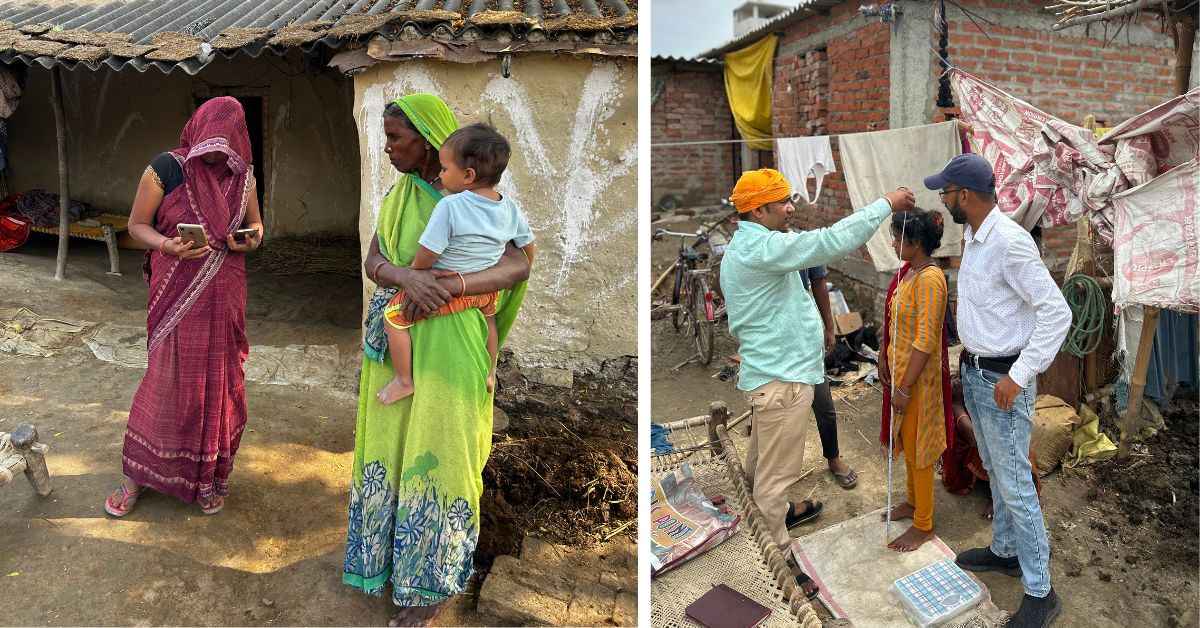
These conversations help the team gauge the status of the different households; which ones are run by single women, which ones are run by widows, which ones depend on farming for their livelihoods, and which homes have people with a disability.
All of this data is fed into the app, basis which it assesses which families will most benefit from the programme. The assessment metrics are vulnerability, asset holdings, the number of people working in the family, and the size of the family.
The beauty of the app is that it removes any inconsistencies in bias.
Elaborating on this, Vinod explains, “For instance, if a person visits a family of daily wage workers during the harvest season when they are getting a stable income, they might have a completely different idea about the family’s income status compared to if they would have visited the family in the monsoon season, when the sowing is done and there is no work.” This is where the app comes in, removing inconsistencies in human bias.
How the app works is that it calculates the average pay that the person is getting in a year, by factoring in what kind of work the person does. “The app also flags any inconsistencies here; for instance, if a person is doing daily labour and mentions that they earn a very high amount, the app would flag it immediately, as it has already been programmed with information on the pay for different types of jobs,” Vinod explains.
To this end, every family is asked two questions: what kind of work they do and what the pay is per day. The data is then fed into the app, and it goes ahead and produces a holistic picture of the family’s economic status.
Adding that selection is done at the doorstep of the family, Vinod says, “If a family is claiming to have five goats, we ask to see the goats. We also require a selfie to be taken in front of the house, and the location to be recorded for future visits. Then follows a two-step OTP process and submission of the selection form.”
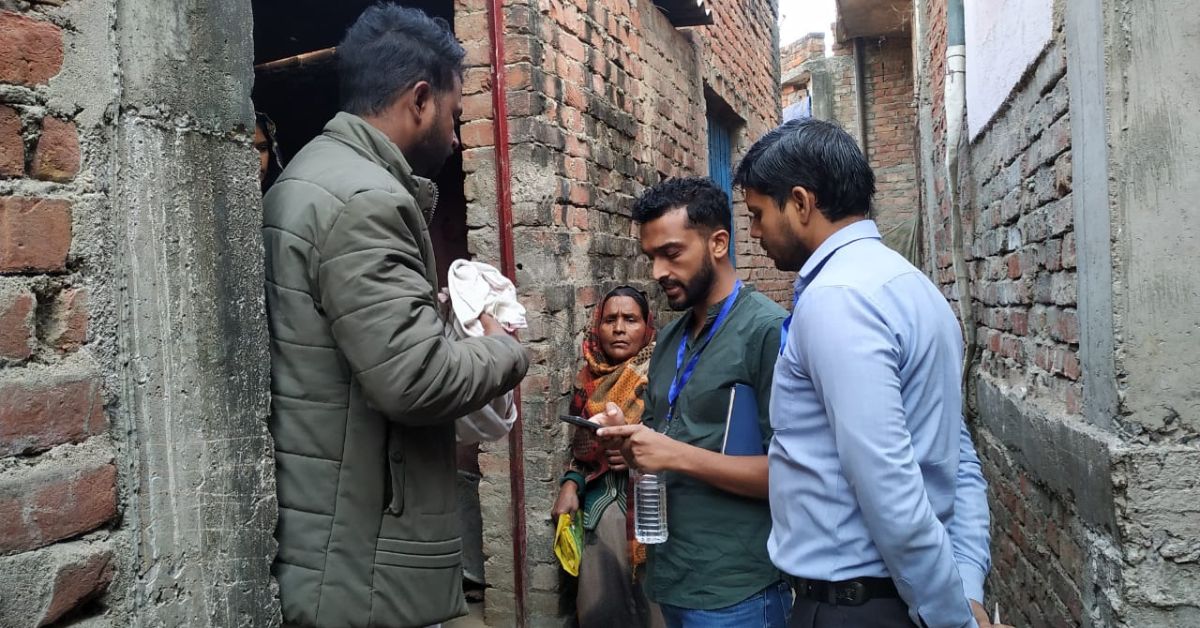
From a survey of 50 families, 12 are selected for the programme and invited to a training day.
Here, they are encouraged to reconnect with their dreams, identify a skill they can turn into a business, and learn how to make the most of existing resources. They also receive guidance on creating a business plan.
Uncertainty, hesitation, and a lack of motivation mean some families drop out — in many cases, only eight of the 12 continue.
Building sustainable ventures
Around 5.3 percent Indians live in extreme poverty according to a World Bank report (2022-2023).
But how does one even define poverty?
The World Bank takes into account the International Poverty Line. Since 2021, this is set at $3 (around Rs 263), meaning that anyone earning less than $3 a day is considered to be living in extreme poverty. This defines poverty as a deprivation in well-being, where the ‘poor’ are those who do not have enough income.
The Rangarajan Committee (headed by Dr C Rangarajan, a prominent Indian economist and former Governor of the Reserve Bank of India) defines the poverty line as the simultaneous satisfaction of all three nutrient-norms — a full range of policies and programmes for child nutrition support; public provisioning of a range of public goods; and services aimed at the amelioration of the disease environment facing the population.
Meanwhile, the UN Guiding Principles on ‘extreme poverty’ classify it by social exclusion, lack of identity papers, unsafe housing, insufficient food, and lack of access to health care and to education.
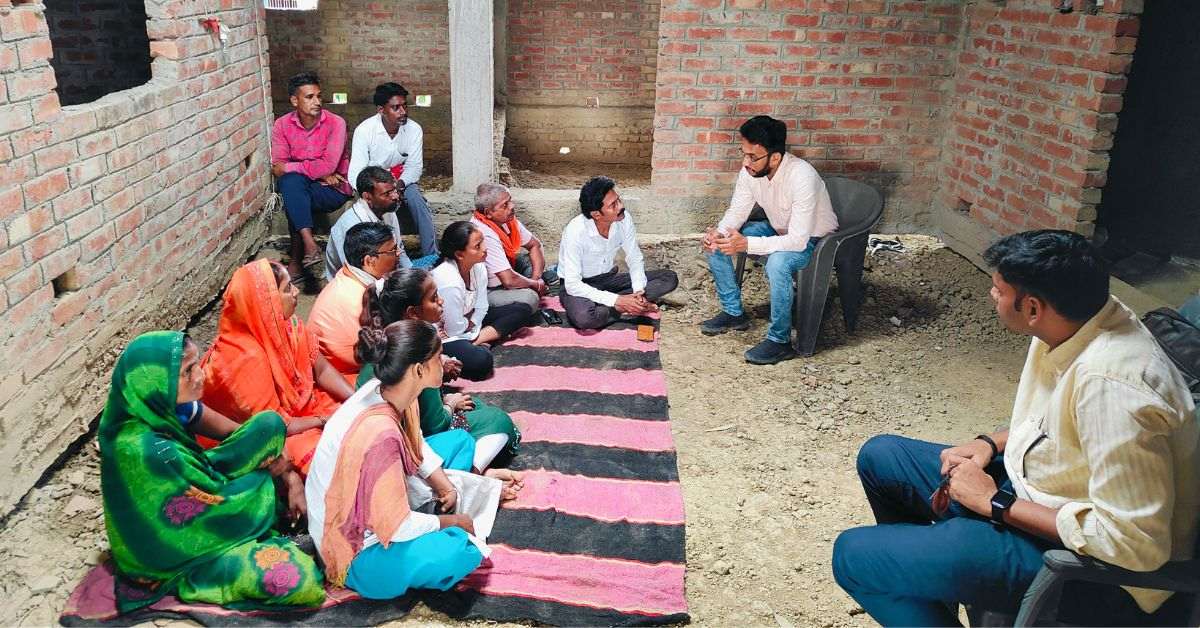
To this end, Vinod shares how, venturing into the fringes of India, attempting to tackle a multifaceted challenge can be daunting. So, it has to be broken into steps.
He explains that while encouraging a certain family to come up with a business idea, they are prompted with the following questions:
1) What business do you want to start and why?
2) Where have you gotten the information to start this business from?
3) What will you need to start this business, and how much will these resources cost?
4) How much will you earn through the business?
5) How will you scale this business?
The second question is key, Vinod underscores. “How we advise them to go about answering this question is, let’s say someone wants to open a tailoring shop, we ask them to speak to five tailors in the vicinity, five suppliers of tailoring materials, and five customers to gauge their support. This is where we see people stumble because this is where they have to really get out and do the research and come back.”
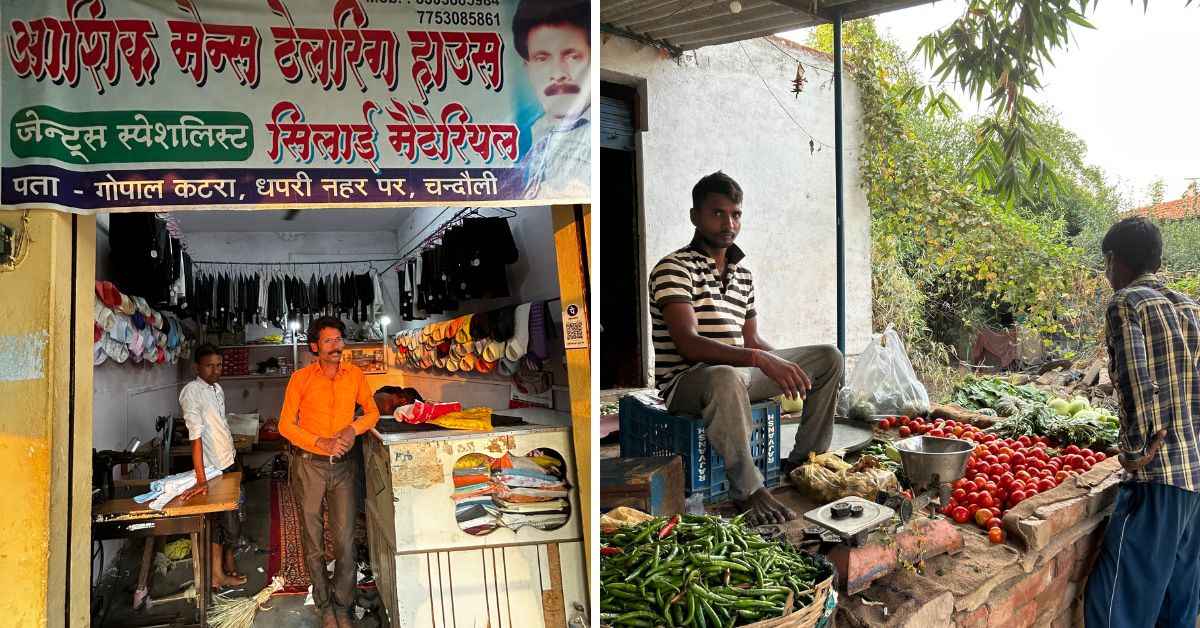
This ensures that the business idea isn’t brewing in a vacuum, but rather, assures it the collective support of the community.
He emphasises that while the families are encouraged to choose a business of their choice, they are steered towards businesses that will be profitable in the long run.
“Many choose goat farming, but in areas with little space and no land for grazing, the goats often fall sick — and the family can lose their only source of livelihood.”
Instead, the families are urged towards businesses that will be sustainable. This includes a kirana shop (petty shop), salons, beauty parlours, repair shops, and the likes. These skill-service-based businesses are more likely to succeed.
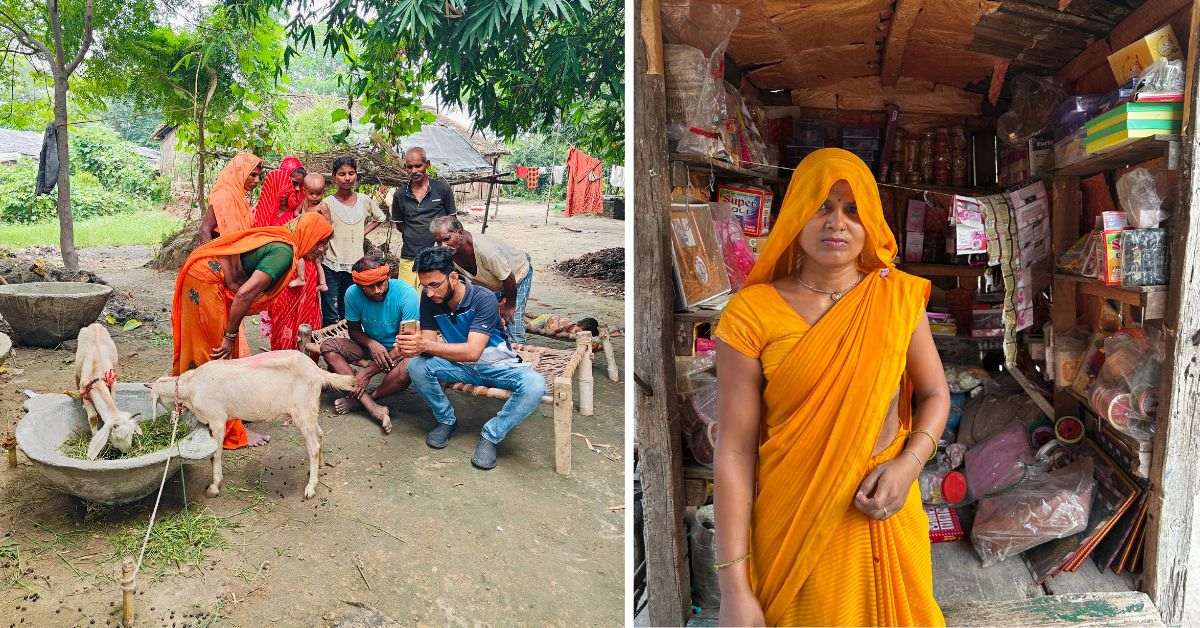
Each selected family is also given Rs 8,000. This, Vinod explains, helps the people who don’t have a smartphone or those who are first-time smartphone users to go and buy a smartphone. “Those who already have a smartphone would use this money towards other expenses later on in the business.”
Then follows the business setup processes, which go on from day 13 to 27. “Around 95 percent of our beneficiaries have their business up and running by day 30 of the programme. Then, day 28 to 60 sees them develop business resilience through coaching; right from the pitching stage, we tell them what this money should be used for and what this money should not be used for. Like the money cannot be used to pay any debts, it cannot be used for starting any other business aside from the one agreed upon, or any kind of family expense,” Vinod points out.
Levelling the playing field of economic parity
Even from a distance, couple Chandra Kumari and Ashok Kumar are unmissable. The village people of Sarane in Chandauli, Uttar Pradesh, have learnt to identify them from their modified cycle on which they sell vegetables. The duo, both polio survivors, run this business in an attempt to afford their children a good education.
Chandra used the extra income to buy two goats. Today, as a Leap 300 graduate, she owns six goats and earns Rs 200 daily from goat milk sales, while the vegetable sales earn them Rs 800 daily.
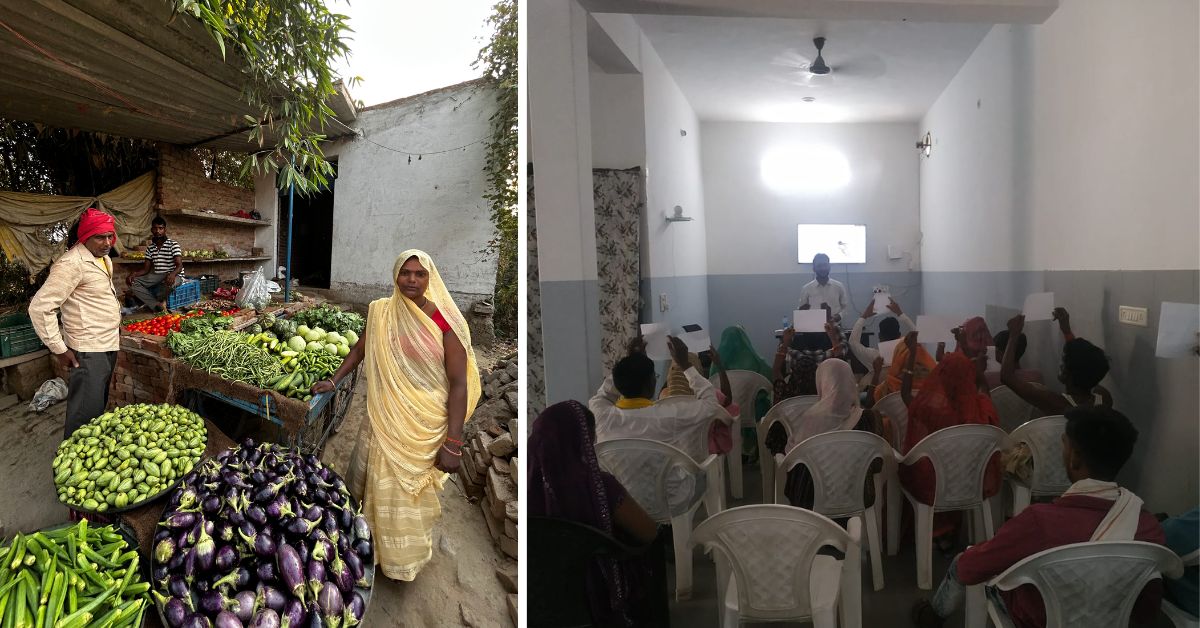
Watching a family scale an idea into a viable passion project is fascinating for the team. Vinod adds that day 60 to 300 is divided into the business growth, business expansion, graduation and sustenance. A recurring deposit is created to promote savings.
Post the programme, the Leap 300 team follows up every month for one year, and every quarter, thereafter, for two years.
And is the model successful?
According to an efficacy study led by Professor Mridula Goel of BITS Pilani, 91 percent of beneficiaries of Leap 300 “graduate” from extreme poverty within 300 days. This is measured by a 150 percent increase in their average income, 62 percent increase in productive assets. While the study is still underway, early results indicate the Leap 300 model could be a viable template.
But that being said, an emergence out of poverty is defined by many yardsticks, Vinod explains, “One of them is, of course, crossing the World Bank poverty line.” In some cases where the family was already above the poverty line, a ‘graduation from poverty’ would mean them earning more post the programme than they were earning prior to it.
He elaborates, “If the median income of a family is Rs 4,000 a month, it would be around Rs 12,000 when they ‘graduate’.”
Along with income increase, a transformation in their overall well-being is also measured by factoring in how their lifestyle has changed, how their diets have changed, whether their children are going to school, what the health of the family is, and what kind of assets they have.
The idea, Vinod explains, isn’t just to meet a metric, but to create more entrepreneurs like Tetari Devi and Chandra Kumari, who no longer shy away from taking a stand for their ideas.
All pictures courtesy Leap 300
No comments:
Post a Comment